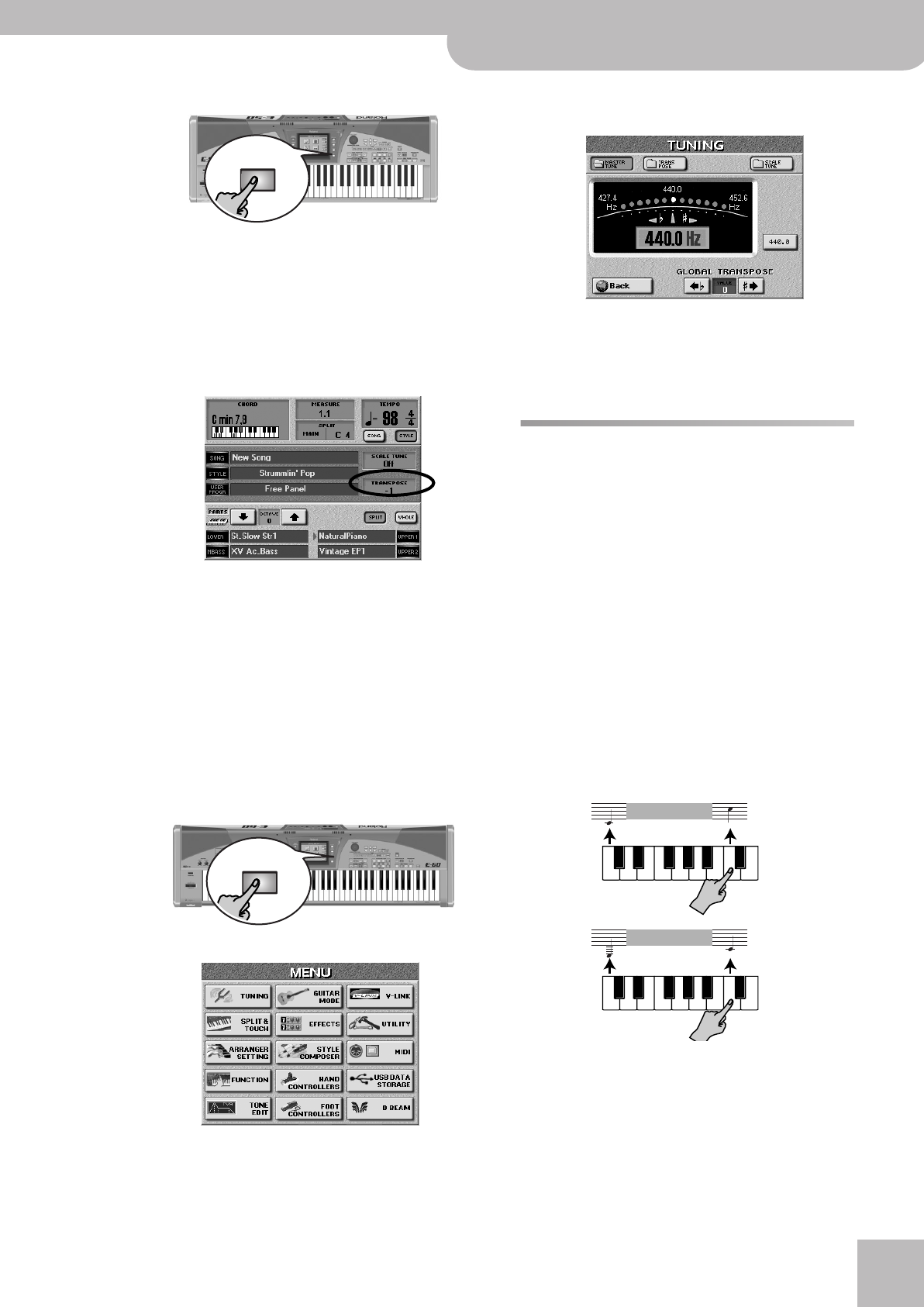
Octave
E-60/E-50 Music Workstation
r
49
(4) Press the [EXIT] button to return to the main page.
As long as the interval is different from “0”, the
[TRANSPOSE] button lights to signal that the Trans-
pose function is active. To switch off the transposi-
tion function, press the [TRANSPOSE] button (or field)
again, then the key that is assigned to the “0” inter-
val.
The transposition interval is indicated on the main
page:
“–1” refers to a semitone decrease of the pitch, so
that you hear a “B” each time you play a “C”. It also
means that, rather than the “A” you press, you will
hear “G sharp” (or “A flat”).
Global Transpose
There is also a “master transpose control” that alters the
pitch of all of the E-60/E-50’s sections. Its value is
added to the current transposition interval as well as
User Program transposition until you reset it to “0” or
until you switch off your E-60/E-50.
(1) Press the [MENU] button.
The display changes to:
(2) Press the [TUNING] field, followed by the
[MASTER¥TUNE] field.
(3) Use the [√≈ƒ] and [≈®] fields to transpose the E-60/
E-50’s pitch.
The setting range is –6~0~5 semitones. This setting
applies to all sections and all User Programs.
Octave
The Octave function is another useful parameter that
allows you to change the pitch of the selected part in
octave steps (12 semitones at a time).
You could take advantage of this function for solo parts
where you need the UP1 and UP2 parts to trigger the
same Tone, while UP2 plays one octave above or below
UP1. Another use for this function is to provide access
to the “noises” of the E-60/E-50’s new Tones so as to be
able to trigger the scraping, knocking, etc.
This probably only works when you use a Keyboard part
(MBS, LWR, UP2, UP1) if the keyboard is not split
(page 47). Working in SPLIT mode indeed means that
you can only play the notes up to a certain point (the
split point). For the “noises”, you need to select the set-
ting “–3”. Note that this also means that you need to
play the “real” notes at the right end of the keyboard,
because the entire part/Tone is transposed down.
This parameter also comes in handy when you wish
to trigger Drum Set sounds that are not accessible via
the keyboard in its normal state. Remember that
there are 61 (E-50) or 76 keys (E-60), while some
Drum Sets provide drum/percussion sounds for all
128 notes supported by the MIDI standard.
EXIT
MENU
C2
C3
OCTAVE= –1
OCTAVE= 0
C2
C3
E-60_50_OM_UK.book Page 49 Thursday, June 22, 2006 10:06 AM


















